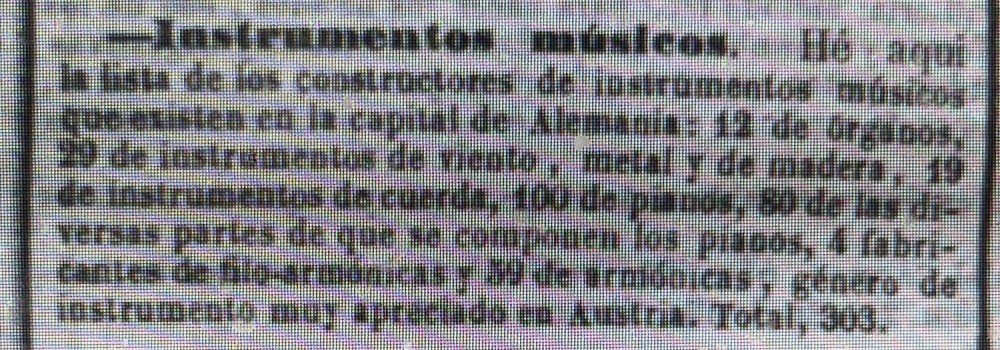How many workshops in the capital of Germany were producing Musical Instruments in 1852?
It wasn't until 1871 that Germany became a country, as we know it today, there had been over a dozen Germanic states, where the German language was spoken by the industrious people. In 1846 the railroads became a common way to ship products toward their destinations.
Due to the massive increase of power of the piano forte in the 19th century it became very very popular.
As the interest waned for the guitar in Europe in the mid to late 19th century, it blossomed in Argentina and other countries above and next to that land whose capital, Buenos Aires, was the Paris of South America.
In the daily "El Constitucional" (Madrid. 1851) on March 11, 1852 on page 3 was an interesting small article about the production of Musical Instruments in the capital of the undefined Germanic state.
Translation: "Musical Instruments" I have here a list of the constructors of musical instruments that exist in the capital of Germany: 12 of organs, 20 of wind instruments, of metal and wood, 19 of string instruments, 100 of pianos, 80 of the variety of parts that comprise the piano, 4 fabricators of filo-harmonicas and 39 of harmonicas; a type of instrument very appreciated in Austria. Total 303."
